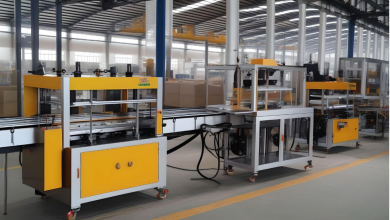WHAT CAUSES LOW FLAME ON A GAS STOVE?

Your gas burner cooks your food by releasing gas into high – temperature flames. The gas is discharged in a constant, uniform stream, resulting in even flames and heat.
The flame should become larger or smaller when the knob on the gas stove top is turned up, depending on the requirement for heat. However, if you keep increasing the temperature and the flame only flickers or goes out, you have a serious problem https://burnessa.com/generic/is-an-orange-flame-on-a-gas-stove-dangerous/.
The source of this problem is something that can be remedied rather quickly in some cases. However, the true danger is if you just keep going despite the possibility of a problem. The absence of a flame does not imply that the gas is no longer there.
This implies that if you don’t keep an eye on your food, you may be filling your house with gas, which is plainly dangerous. As a result, you must rapidly identify the source of the problem in order to get it rectified for the sake of your food and your personal safety.
A Misaligned Burner Cap
The burner cap has a couple of functions. The major objective of a burner cap, on the other hand, is to not only cover the parts beneath, but also to disperse the gas so that it may readily ignite and spread the flames once it has.
since the igniter would probably struggle therefore, it would be appropriate to manually ignite the gas without a burner cap. Hence the flame would just travel straight up into a plume rather than a level spread.
If for any reasons the burner cap has been jolted or detached then it may not put back on in the appropriate alignment it. It has the potential to obstruct some burner heads and restrict airflow.
The burner is straining to ignite, and when it does, the flame is greater on one side than the other, indicating that this is the problem.
With the gas and flame turned off and the burner cap sufficiently cooled, all you have to do is move the cap about and reposition it to remedy the problem. Because it’s so simple to accomplish, it’s absolutely something to look into first.
A Clogged Burner Head
The burner head, like the burner cap, aids in the distribution of gas and flame. It’s really made up of a series of little holes through which the gas escapes and forms those tidy little consistent flames.
The biggest disadvantage of this setup is that scraping around the burner head might actually drive food particles or food spillages into the holes. They subsequently solidify and do not allow much, if any, gas to escape.
When you look at the flames, you may notice spots where the flame is absent, which is a good clue that this is your problem. If sections of the circular flame are lower or absent from that uniformity, it indicates that not as much gas is being emitted in that region.
It’s necessary to clear out the alcoves, but don’t use toothpicks or other sharp objects to do so. Unfortunately, this only adds to the situation.
Also, you can’t count on the debris burning up and clearing up that way since the flame doesn’t start until it’s outside the burner head owing to the way gas pressure spreads the flame through the head.
A Clogged Gas Valve
You can clog the tube that distributes the gas, just like a blocked burner head. It’s simply that it’s more difficult to do. Because this tube is hidden behind the burner cap, it’s difficult to scrape food into it and clog it.
One event that occurs is that people wipe the burner head with a toothpick, then push it into the gas tube to clear away any light buildup, and the item breaks off in there, causing a blockage.
While the burner cap and burner head may survive minor washing, a clogged gas valve should be addressed by a professional.
A gas leak might occur if you use too much motion to clear the obstruction. So, if it’s not something that can be fixed softly and simply, you’ll need expert help.
A Faulty Control Valve
It’s a control valve problem if your stove’s flame isn’t uneven but is consistently low no matter how much you adjust it. The control valve, also known as a pressure regulator, regulates the amount of gas discharged as well as the pressure with which it is emitted.
This is what causes the flames to grow larger and stronger when the heat is increased. It is, however, erroneous if the flames remain tiny but even.
The control valve is broken and cannot be fixed. It must be changed if it is defective. It’s hidden underneath your gas stove’s burner knobs. While getting to the control valve is rather straightforward, changing it necessitates a significant amount of disassembly.
In certain models, you’ll need to remove the burner head to access the spark switch, and you’ll need to detach the gas tube (with the gas and electricity turned off, of course) to access the old control valve. Even when the new control valve is ready to be installed, you must ensure that the gasket for it is properly installed to prevent gas leaks.
Unfortunately, one of the parts responsible for gas release is addressed in this repair. If this is the case, you should contact a professional appliance repair specialist to make the necessary repairs.
This guarantees that it is completed quickly, safely, and accurately. Gas appliances are extremely efficient, but they are also risky to fix on your own.



